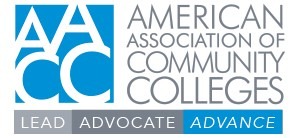- FSA releases 2026-27 FAFSA Preview Presentation; details OBBBA changes
- New guidance on Federal Work Study and voter engagement activities
- ED releases NPRM on PSLF
FSA releases 2026-27 FAFSA Preview Presentation; details OBBBA changes
The Education Department’s (ED) Office of Federal Student Aid (FSA) last week released the 2026-27 Free Application for Federal Student Aid (FAFSA) Preview Presentation. The tool allows financial aid officers, counselors, and other stakeholders to walk through the FAFSA form for differently-situated students, including dependent and independent students, provisionally independent students, and dependent students applying only for Direct Unsubsidized Loans.
The presentation also similarly walks through the corrections process for applicants, including a student adding a school to the form, submitting a correction to their homeless status, managing FAFSA contributors, and adding missing contributor consent or approval. A routine part of the annual FAFSA rollout process, the Preview Presentation helps colleges and college access professionals prepare to answer student or contributor questions and troubleshoot any application issues ahead of the form going live on October 1.
This week, FSA issued a new Electronic Announcement (EA) detailing how changes made in the One Big Beautiful Bill Act (OBBBA) reconciliation legislation will be implemented in the 2026-27 award year and incorporated into the 2026-27 FAFSA. While many pieces of OBBBA will have to go through ED’s negotiated rulemaking process, including changes to loan origination and repayment, Workforce Pell and accountability, many of the changes to student aid eligibility are relatively minimal and can be implemented without additional regulations.
These changes include exempting the value of a family farm, small business and family-owned commercial fishing venture from reported assets; adding any foreign earned income exclusion amount to the adjusted gross income (AGI) for determining Pell Grant eligibility; and restricting Pell Grant eligibility for students with a Student Aid Index (SAI) equal to or greater than twice the maximum Pell Grant ($14,790 for the 2026-27 award year).
ED confirmed that changes to Pell Grant eligibility will be fully implemented ahead of the FAFSA launch date of October 1, but may not be fully implemented during the ongoing rounds of beta testing. This means that colleges may receive reprocessed Institutional Student Information Records (ISIRs) for the small number of students participating in beta testing for whom the Pell changes may apply. The family farm/small business/family-owned fishery assets exemption has been added to the FAFSA form that students and families are currently filling out during beta testing.
New guidance on Federal Work Study and voter engagement activities
ED this week issued new guidance rescinding 2024 guidance that allowed students receiving Federal Work Study (FWS) to work in “broad-based get-out-the-vote activities.”
The new guidance clarifies that students may not earn FWS funds through partisan or non-partisan political work activities, including being a poll worker, manning a voter hotline, registering voters, or hosting rallies or events that encourage political engagement or voting. Instead, the guidance “encourages institutions to employ students in jobs that align with real-world work experience related to a student’s course of study whenever possible.”
ED also clarifies institutions’ responsibilities under the Higher Education Act (HEA), requiring colleges to provide opportunities for students to register to vote. Per the guidance, institutions are encouraged to remind students of applicable voting laws around citizenship and residency as they distribute voter registration materials to “avoid aiding and abetting voter fraud, such as actions to aid or abet a noncitizen to vote in a federal election.”
ED releases NPRM on PSLF
ED last week issued a Notice of Proposed Rulemaking (NPRM) to implement changes to qualified employers under Public Service Loan Forgiveness. The NPRM is a step in the regulatory process that follows the negotiated rulemaking tables convened by the department earlier this year.
President Trump issued an Executive Order (EO) in March that directs federal agencies to revise program regulations, stating that “instead of alleviating worker shortages in necessary occupations, the PSLF Program has misdirected tax dollars into activist organizations that not only fail to serve the public interest, but actually harm our national security and American values, sometimes through criminal means.”
The EO instructs the education secretary to revise the definition of “public service” to exclude any employees of organizations that the administration feels engage or support illegal activities from the program. Because the proposed changes affect the HEA program, ED was required to use negotiated rulemaking to promulgate conforming regulations.
The selected negotiators discussed clarifications to the definition of a qualified employer, what constitutes illegal activity and how that activity is determined, obligations on both employers and ED to notify impacted borrowers, and opportunities to appeal a determination or regain employer eligibility. They did not reach consensus, meaning that ED was not bound by the language negotiated by the committee.
In the NPRM, the department will have broad authority to determine if an employer is engaging in illegal activities, based on a “preponderance of the evidence.” The NPRM rejected negotiated language that would have made the determination based on “clear and convincing evidence.”
The NPRM adds a new provision allowing an opportunity for employers to regain eligibility 10 years after an employer loses eligibility (up from the 5 years proposed by the committee). Finally, a new provision would allow the secretary to consider multiple employers under a shared tax identification number, like a college system, separate if the employer is operating independently and distinctly.
ED will accept comments on the NPRM until October 18. It will likely issue a final rule ahead of November 1.
